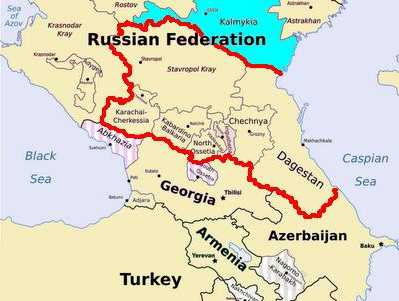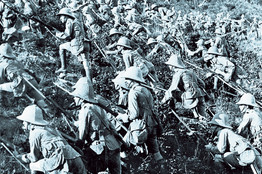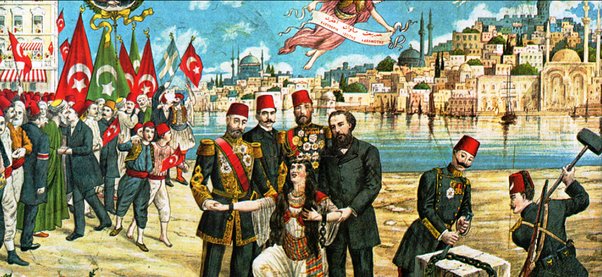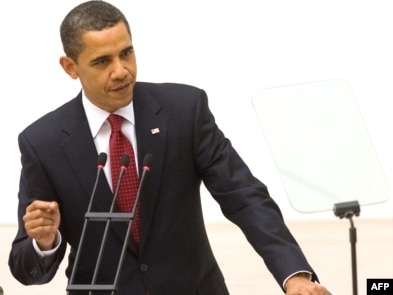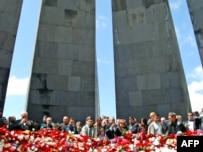[ 28 May 2009 00:12 ]
Baku – APA. 91 years have passed since the first democratic was established in the East, APA reports.
Azerbaijan People’s Republic was declared on May 28, 1918 in Tbilisi by the Azerbaijan National Council headed by Mahammad Amin Rasulzadeh. The Declaration of Independence adopted by the National Council of Azerbaijan said:
1. Azerbaijani People have a power and Azerbaijan located in the South-Eastern Caucasus is fully legitimate independent country from today;
2. Form of government in independent Azerbaijan is People’s Republic;
3. Azerbaijan People’s Republic intends to establish friendly relations with other nations particularly with neighboring nations and states;
4. Azerbaijan People’s Republic gives equal political and civil rights to its citizens without distinction as to their national identities, faiths, classes and races.
5. Azerbaijan People’s Republic creates wide opportunities for the free development of all nations living in its territory.
6. The National Council elected by the people and the Temporary Government, which is responsible before the National Council, will lead Azerbaijan until the Assembly of Founders is established.
As Rasulzadeh was holding negotiations on Azerbaijan’s independence with the Ottoman Empire in Batumi, deputy chairman of Azerbaijan National Council Hasan bey Agayev chaired the meeting, where the Declaration of Independence was announced. Mustafa Mahmudov was secretary at the meeting. Fatali khan Khoyski, Khalil bey Khasmammadov, Nasib bey Yusifbeyli, Mirhidayet Seyidov, Heybetgulu Mammadbeyov, Nariman bey Narimanbeyli (not Bolshevik Nariman Narimanov – editor), Mehdi bey Hajinski, Alasgar bey Mahmudbeyov, Aslan bey GArdashov, Sultanmajid Ganizadeh, Akbar aga Sheikhulislamov, Mehdi bey Hajibabbabeyov, Mammad Yusif Jafarov, Khudadat bey Melik-Aslanov, Rahim bey Vekilov, Hamid bey Shahtakhtinski, Firudin bey Kocharli, Jemo bey Hajinski, Shefi bey Rustambayov, Khosrov Pasha bey Sultanov, Jefer Akhundov, Mahammad Maharramov, Javad Melik-Yeganov and Haji Molla Salim Akhundzadeh attended the meeting.
Azerbaijan’s territory was 99908.86 sq m when Azerbaijan People’s Republic was announced. 13983.1 sq m area was accepted as a disputable area, it was planned to solve it during the negotiations with Armenia.
The first temporary government of Azerbaijan People’s Republic under the leadership of Fatali khan Khoyski was confirmed at that meeting of Azerbaijan National Council. The composition of the first government was as follows:
Fatali khan Khoyski – chairman of the Council of Ministers and Interior Minister
Khosrov Pasha bey Sultanov – Defense Minister
Mammadhasan Hajinski – Foreign Ministers
Nasib bey Yusifbeyli – Minister of Finance and Enlightenment
Khalil bey Khasmammadov – Justice Minister
Mammad Yusif Jafarov – Minister of Trade and Industry
Akbar aga Sheikhulislamov – Minister of Agriculture and Labor
Khudadat bey Melik-Aslanov – Minister of Roads and Post-Telegraph
Jamo bey Hajinski – State inspector
Azerbaijani government was temporarily based in Gandja, as Baku was under Bolshevik-Dashnak control headed by Stepan Shaumyan.
On September 15, 1918 after the heavy battles Azerbaijani National Army and Caucasian Islamic Army led by Nuru Pasha liberated Baku from Bolshevik, dashnak and English military units and independent Azerbaijani Government moved to Baku.
Azerbaijani Parliament was solemnly inaugurated in Haji Zeynalabdin Tagiyev’s school for girls (now the building of Manuscripts Institute named after Fuzuli) at 13.00 on December 7, 1918. Chairman of Azerbaijan National Council Rasulzadeh made a speech of congratulation.
On the initiative of Musavat faction, Alimardan bey Topchubashov was elected chairman of the parliament, Hasan bey Agayev first deputy chairman of the parliament. Topchubashov was attending the Paris Peace Conference, therefore Hasan bey agayev chaired the parliament. At the first meeting of the parliament Fatali khan Khoyski’s government resigned and decision was made to form a new government. Fatali khan Khoyski led the government again.
155 meetings of the parliament were held during the period of Azerbaijan People’s Republic. Of ten were held during the period of Azerbaijan National Council (May 27 – November 19, 1918), but 145 were held during the period of Azerbaijani Parliament (December 7, 1918 – April 27, 1920).
More than 270 draft laws were discussed at the Parliament and about 230 of them were ratified. MPs from 11 factions and groups participated in the development, discussion and ratification of the parliamentary laws. There were 11 commissions at the Parliament of Azerbaijan People’s Republic.
Azerbaijan People’s Republic gained considerable achievements in its short life. The Republic, which provided women with electoral rights for the first time and restored man-woman equality, did great works in national army building, national currency, establishment of National Bank, democratization, free elections, international relations, official recognition of Azerbaijan’s independence by the international community, economic reforms and other fields.
Unfortunately, Azerbaijan People’s Republic existed only for 23 months and overthrown by Bolsheviks on April 28, 1920.
Independence of Azerbaijan People’s Republic was first officially recognized by Ottoman Empire on June 4, 1918.

